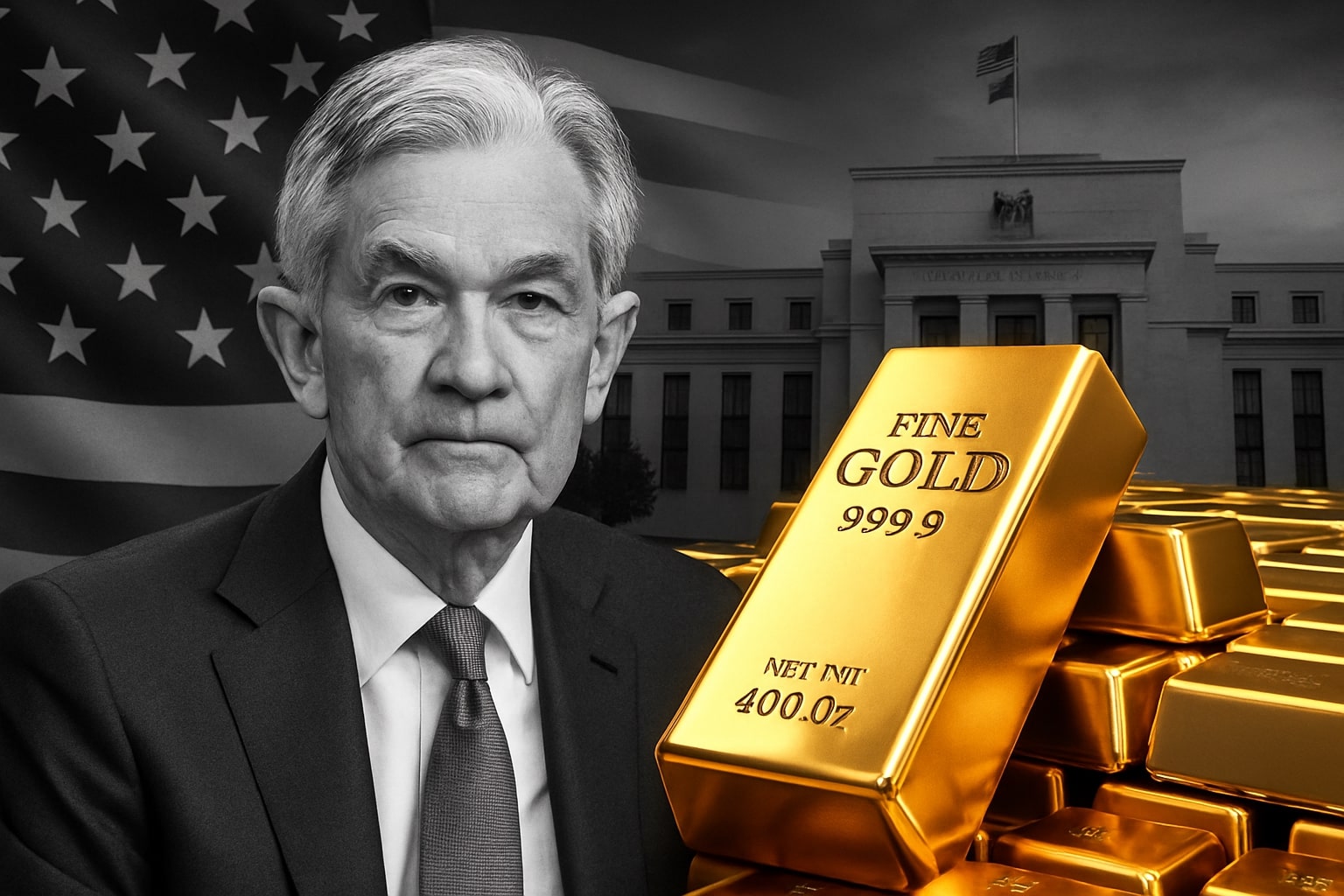
Oil Price Forecast - Oil Prices Crash as Ukraine Peace Deal and Supply Surge Ignite Global Oil Selloff
Crude collapses after Ukraine peace signals raise hopes of sanction relief for Russia; JPMorgan warns Brent could fall into the $30s by 2027 amid oversupply | That's TradingNEWS
Oil Market Under Pressure As WTI (CL=F) And Brent (BZ=F) Extend Sharp Losses
Oil prices continued to fall with WTI Crude (CL=F) down 1.87% to $57.74 and Brent (BZ=F) sliding 1.78% to $62.24, marking another consecutive session of weakness. The selloff intensified after confirmation that Ukraine and the U.S. reached a preliminary peace framework, which traders interpreted as a potential signal for a gradual lifting of Russian energy sanctions. The impact was immediate as WTI broke below the $60 per barrel threshold while Murban Crude dropped 2.14% to $63.63, Louisiana Light fell 1.94% to $61.06, and Bonny Light plunged 2.84% to $78.62, underscoring global weakness across benchmarks.
Ukraine Peace Framework Alters Sanctions Outlook And Supply Projections
Discussions in Geneva between U.S. and Ukrainian delegations led to confirmation from Rustem Umerov, Ukraine’s Security Council Secretary, that both sides reached common terms. Market interpretation was immediate — traders expect that a finalized peace deal will loosen restrictions on Russian crude flows, adding as much as 2.3 million barrels per day (bpd) of new supply into an already saturated market. This potential shift in trade dynamics, coupled with muted refinery demand from Asia, drove selling pressure across futures markets as investors recalibrated for a potential Q1 2026 glut.
JPMorgan Forecasts $30 Brent Scenario As Structural Imbalance Deepens
Analysts at JPMorgan outlined a scenario where Brent (BZ=F) prices could collapse by 50% over the next two years, dropping from around $63.50 today to the low $30s by late 2027. The bank’s projection highlights a widening gap between supply and demand, with non-OPEC+ production expected to expand at three times the pace of consumption. The U.S., Brazil, and Canada account for the majority of incremental barrels, pushing the global surplus to an estimated 2.8 million bpd in 2026. Even with steady consumption growth, this imbalance leaves prices vulnerable to structural weakness, with JPMorgan predicting an average Brent price near $42 in 2027 and WTI potentially averaging $38–$40 during the same period.
OPEC+ Faces Market Share Challenge As Non-OPEC Supply Expands
OPEC+ producers continue to face an uphill battle in defending market share. Internal divisions have made coordinated cuts increasingly difficult, with Saudi Arabia and UAE focusing instead on expanding refining and petrochemical output to maintain fiscal stability. Russia’s Deputy Energy Minister warned that persistent underinvestment and sanctions have distorted the long-term balance, yet the U.S. shale sector remains competitive even with WTI near $55, ensuring ongoing oversupply. This divergence between state-driven restraint and private-sector output growth is creating a sustained ceiling over prices.
Regional Price Disparities Highlight Market Fragmentation
Regional benchmarks reflect mixed resilience amid the global downturn. Mars US traded at $70.36 (-1.35%), holding relatively stable due to Gulf Coast export demand. The OPEC basket edged up 0.22% to $63.14, showing limited support from Middle Eastern producers. Gasoline futures slipped 2.34% to $1.852, while Natural Gas (NG=F) fell sharply by 5.69% to $4.29, indicating a broad correction across the energy complex. Meanwhile, Azeri Light climbed 0.80% to $67.04, benefiting from regional demand in Türkiye and Georgia — a rare exception amid widespread weakness.
Technical Picture Points To Continued Downside Momentum
WTI remains below its 50-day and 200-day EMAs, with resistance at $60.50 and short-term support at $55.00. Brent mirrors the same pattern, capped around $65 and targeting potential declines toward $58. The RSI reading below 40 confirms negative momentum, while open interest in WTI futures declined 8% week-over-week, signaling liquidation rather than new short interest. On the options side, 68% of active ICE Brent contracts are puts, suggesting institutional hedging for continued weakness.
Macroeconomic And Geopolitical Variables Shift Market Sentiment
The Ukraine peace framework coincides with dovish signals from the U.S. Federal Reserve, as futures imply an 85% probability of a December rate cut, bringing the 10-year Treasury yield down to 4.02%. While a softer dollar typically supports commodity prices, the dominance of supply-side risk has overwhelmed macro support. Meanwhile, China’s crude stockpiles surged to a two-year high as imports slowed for the 13th consecutive month, curbing demand for Russian and West African grades. These combined dynamics emphasize how a synchronized recovery in energy demand remains absent.
Corporate And Institutional Reactions Reflect Divergent Strategies
Major oil producers are realigning their strategies in response to the market downturn. ADNOC approved a $150 billion capital expansion plan, betting on long-term consumption growth. Shell and Ferrari formed a 10-year renewable power partnership, reinforcing diversification toward low-carbon assets. Rosneft withheld dividends amid lower export revenues, while Nigeria’s NNPC posted a 64% profit jump to $3.6 billion, benefiting from higher domestic margins and currency-adjusted sales. These corporate responses highlight the uneven financial exposure among producers depending on their cost base and hedging discipline.
Short-Term Trading Remains Bearish With Focus On Resistance Ceilings
Market participants continue to fade each rally toward $60 in WTI and $65 in Brent. Light liquidity due to the U.S. holiday period amplifies volatility, and traders anticipate further declines toward the $55–$56 zone in the coming sessions. Inventories are projected to rise by 3.2 million barrels, reinforcing near-term bearish bias. Intraday resistance stands at $59.80–$60.40 for WTI and $64.70–$65.20 for Brent, both viewed as tactical short-entry zones.
Read More
-
Novo Nordisk Stock Price Forecast - NVO Shares Rebounds to $47.06 as Cost Cuts Set Stage for 2026 Breakout
25.11.2025 · TradingNEWS ArchiveStocks
-
Bitcoin ETF Outflows Reach $151M Amid Rotation to Ethereum, Solana, and XRP ETFs
25.11.2025 · TradingNEWS ArchiveCrypto
-
Natural Gas Price (NG=F) Drops to $4.39 as Record Output and Global LNG Flood Weigh on Futures
25.11.2025 · TradingNEWS ArchiveCommodities
-
Stock Market Today: Alphabet Nears $4 Trillion as NVDA Stock Tumbles 4.6% and Dow Outperforms Nasdaq
25.11.2025 · TradingNEWS ArchiveMarkets
-
USD/JPY Price Forecast - Dollar to Yen Drops to 156.05 as Weak U.S. Data Shake Dollar Strength
25.11.2025 · TradingNEWS ArchiveForex
Forward Curve And Contango Structure Reinforce Bearish Outlook
The futures curve remains in contango, with April 2026 WTI contracts at $61.90 and Brent at $66.20, implying limited recovery expectations. Persistent surpluses incentivize storage plays while weakening prompt-month pricing. Refiners across India and China are cutting Russian purchases, further depressing seaborne demand for high-sulfur grades. African benchmarks like Bonny Light remain under heavy pressure, down 2.84%, as global refiners pivot toward discounted U.S. crude.
Verdict: Sell Rating On WTI (CL=F) And Brent (BZ=F)
The oil market’s structure is decisively bearish. The intersection of peace-driven sanction relief, non-OPEC oversupply, and soft macro demand points toward continued downward momentum. WTI (CL=F) is expected to retest $55, while Brent (BZ=F) faces downside risk to $58, with extended targets near $50–$52 if Russian exports re-enter the global market at scale. The supply-demand imbalance remains unresolved, and short-term rallies present opportunities for tactical selling rather than accumulation.



















